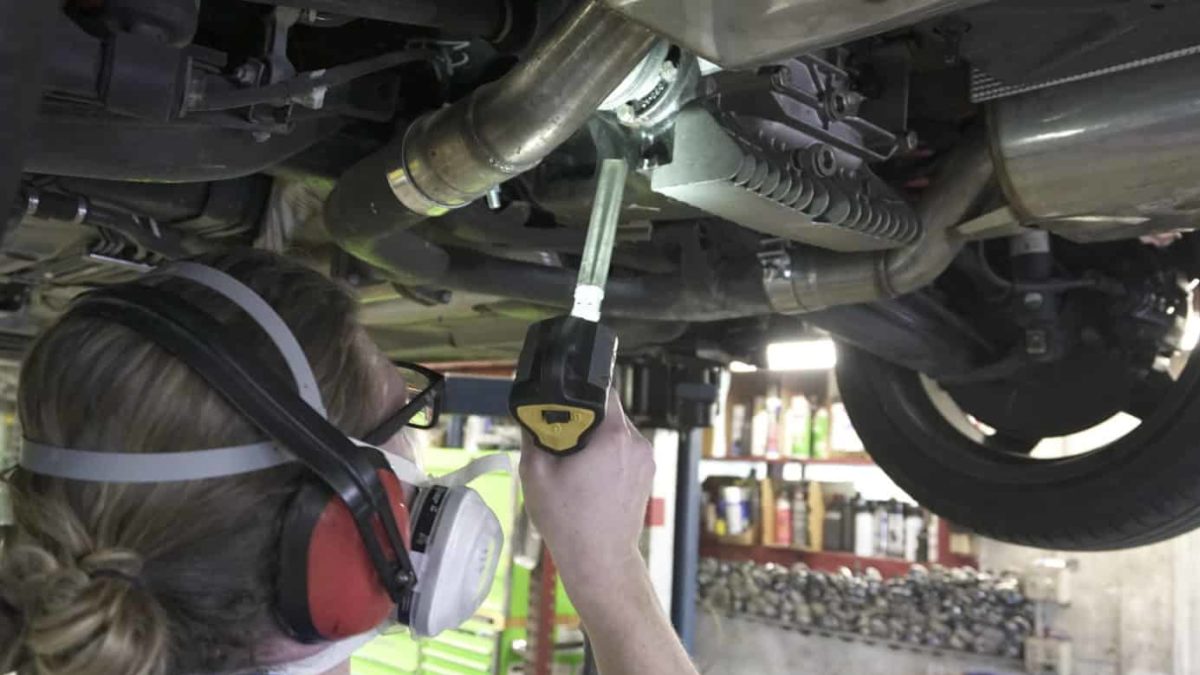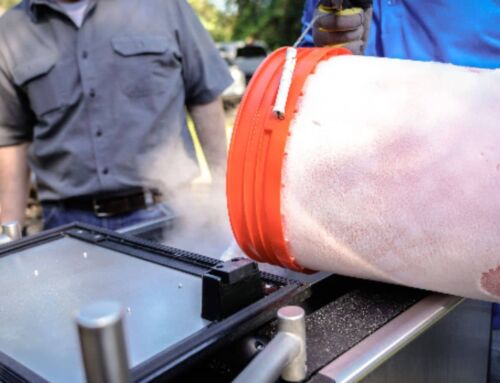
FROM RESTORATION TO PRODUCTION
Although dry ice has been in use for many many years, it has only been in the last few decades that we’ve seen a shift from cold food storage and spooky decorations into the multitude of possibilities available with dry ice blasting. Bringing this technology into the automotive industry, dry ice blasting offers a number of uses from restoration of vintage vehicles to cleaning of molds and equipment along the production line.
Using pressure blasted particles of solid carbon dioxide (commonly called dry ice), instead of using small, abrasive particles for blasting, dry ice blasting uses a pressurized stream of dry ice pellets that are initially solid and begin to sublimate – instantaneously turn to gas) upon impact. Using specialized equipment with variable pressure streams for full control of the blasting and cleaning process, the use of dry ice essentially freezes off unwanted gunk, grime, paint, and more from the surface that you are cleaning. Surface coatings like paint oil, adhesives, and accumulated debris shrink from the change in temperatures and are forcibly blown off the surfaces they are attached to, leaving a clean, dry substrate.
RESTORATION
Automotive restoration is a big business, with car aficionados spending hours upon hours to safely and gently remove years of dirt, grime, and rust to bring old cars back to life. While replacing parts can diminish the overall value, restoration of the car with as many original components is favored by purists. Traditional sandblasting or chemical strippers can damage the integrity of these delicate parts, but with dry ice cleaning, a pressurized stream of dry ice pellets are blasted onto the surface, instantly sublimating and causing the debris to fall to the ground below. This eliminates the need for water or excess cleanup during the restoration process, saving both time and money.
CLEANING ALL SURFACES WITH EASE
- All metals
- Plastic
- Painted body panels
- Painted plastic
- Glass
- Chrome
- Rubber
- Carpet
- Wiring
- Cloth
- Hoses
Gentler on surfaces, dry ice blasting is a proven alternative to sanding, scraping, or chemical paint and rust removal. Since dry ice blasting does not introduce water or chemicals, this system can be used indoors and allows you to prepare surfaces for immediate coating or paint application. You can avoid the need for containment, waste cleanup, drying time, and any post-cleaning prep before moving on to recoating.
PRODUCTION AND MANUFACTURING
Dry Ice allows for cleaning of manufacturing equipment and molds while still in place, at operating temperatures. Non-abrasive, dry ice removes sludge, grease, sealants, and slag without causing damage to machinery or molds. Traditional methods for removing these contaminants, while effective, can add a considerable amount of waste and dust that necessitates extensive containment setup and cleanup, in addition to creating a hazardous work environment and causing potential respiratory distress. With Dry Ice, you can clean equipment quicker and without cooldown or disassembly, allowing you to maintain compliance with industry demands.
CLEANING EQUIPMENT AND MOLDS
- Injection molds
- Blow molds
- Compression molds
- Urethane molds
- Textured molds
- Technical molds
- Extrusion dies
- LSR and LIM molds
By implementing dry ice blasting into routine cleaning along your production line, you can remove a number of contaminants that can alter mold geometry or impede equipment performance. Dry ice blasting provides a versatile cleaning solution that will not damage sensitive or delicate surfaces or surrounding areas while being aggressive enough to meet industrial process cleanliness standards.
The versatility provided by dry ice blasting can be incorporated into both general cleaning applications as well as specialized remediation and heavy-duty cleaning services. Reducing costs and overall downtime, General Abrasives Co. Inc. provides this service to maintain the integrity of your parts while reducing costs, dry ice blasting as a more cost-effective method of cleaning equipment and automotive paint removal.




